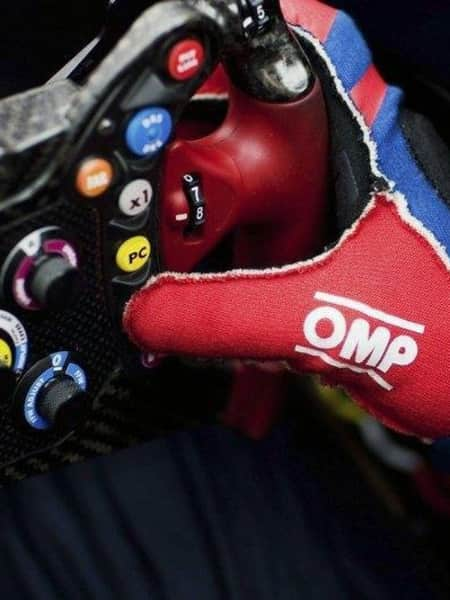Red Bull Motorsports
You’ve probably been go-karting before. Perhaps you even won. Then you thought, “Wow, I think I might be F1 material.” Good on you, champion. Obviously, you know that there’s a lot more to a Formula 1 car than a go-kart, but you’re about to learn a whole lot more of what exactly it means to drive an F1 car. So before you go suiting up, take a look at the perplexing labyrinth that is a Formula 1 steering wheel, courtesy of the McLaren Honda F1 squad:
Are you hyperventilating? Don’t worry, we here at Red Bull Motorsports can help you understand exactly what you are seeing in that mutant video game controller. Here is a breakdown of some of the finer aspects of the standard F1 steering wheel:
PLS – It’s not just a way to write “please” for lazy people; on the F1 steering wheel, it stands for “Pit Lane Speed.” A driver can push this button when entering the pit lane to ensure that he doesn’t get a heavy foot and exceed the 100 kph (about 62 mph) speed limit.
Clutch – Most of you probably know how a clutch works. The F1 cars operate the clutch by use of two paddles on the back of the steering wheel. Only one needs to be used to engage the clutch, so drivers vary which side they are using by how they are turning the wheel.
Drink – Each F1 car is equipped with a pouch filled with water (or whatever the driver chooses), which is connected through a tube to the driver’s helmet. Pressing this button allows him to replenish during the grueling laps of an F1 race.
Overtake – The “push-to-pass” button gives the car a short burst of power, granting the driver the ability to make a quick pass on the track.
Check out a video with then-Scuderia Toro Rosso driver Daniil Kvyat breaking down his car's steering wheel in 2013:

3 min
STR steering wheel explanation
STR8 Steering Wheel Guide: from inside the cockpit, from a drivers’ point of view.
DRS: The Drag Reduction System actually moves a piece of the rear wing on the car to reduce drag, giving it a similar effect to the overtake button without changing any power aspect of the car. Drivers cannot access DRS in the first two laps of a race, and also must be within one second of the car in front at the beginning of the DRS activation zone on the track, as indicated by a light on the dash.
Differential Settings: When a driver adjusts the differential settings of the car, he is adjusting the power distribution between the rear tires. As you can see, there are settings to adjust the ENTRY and EXIT differential settings, meaning power settings when entering and exiting a turn.
Brake Balance: This dial adjusts the front/rear braking ratio on the car. Too much rear braking, and the car will spin; too much front braking, and the car will not turn as sharp. Drivers have to adjust this on the fly as fuel load lightens, track conditions evolve or if weather conditions change.
Engine Mapping: This dial adjusts the power delivery of the engine, as controlled by the ECU. Most cars have four engine maps, ranging from smooth to aggressive power delivery.
Energy Recovery Harvesting: The Energy Recovery Systems (ERS) on today's F1 cars convert kinetic and heat energy generated by the car, into useable electric energy. This dial gives drivers control over the ERS, which gives them access to an extra 160bhp for approximately 33 seconds per lap.
Multi-Function Switch: With this dial, in conjunction with two other buttons on the wheel, drivers can make various adjustments to the chassis of the car.



